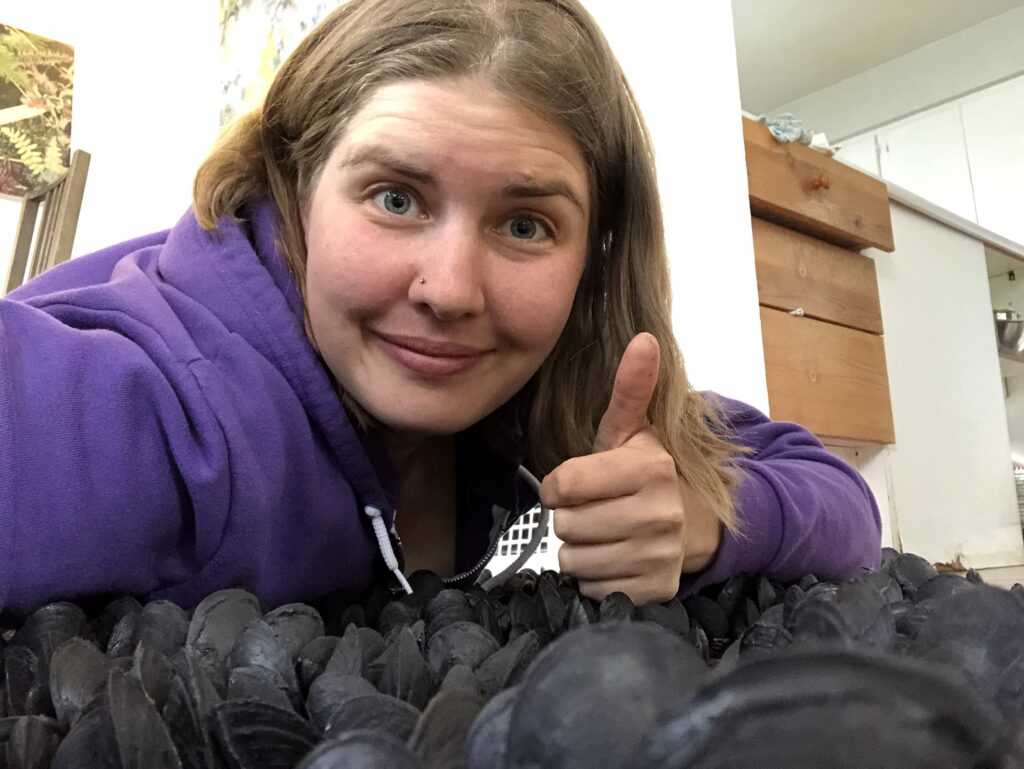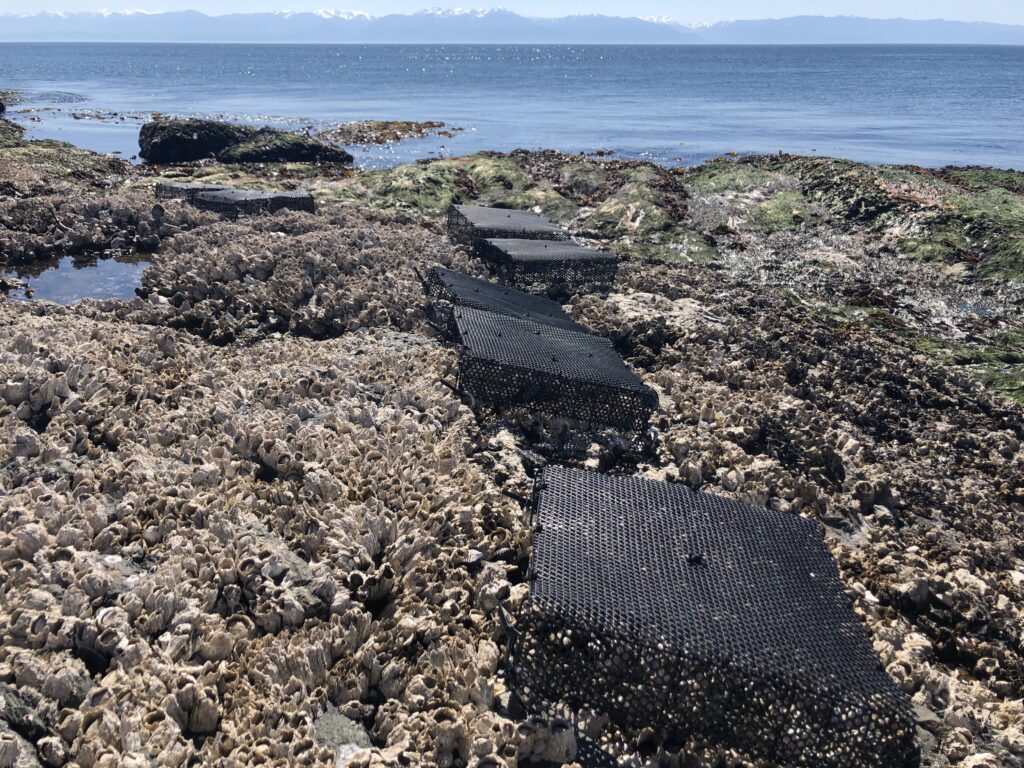Projects
Canopy kelp performance across a latitudinal gradient
Ongoing postdoctoral work! Details to come.
Mussel beds as an intertidal refuge at varying shore levels
This project aimed to look at the effect of mussel bed structure, which provides sediment retention and shade within rocky intertidal habitats, on associated fauna. To do this, I made many, many fake mussels out of epoxy, with fishing line for byssal threads and wove these onto plastic mesh bases. These could then be anchored on bedrock benches at varying shore levels on Galiano Island stress gradient (higher on shore = more thermally stressful than lower on shore). I’m still processing the samples, so results are TBD!

Barnacle beds in extreme heat
This project, completed on the traditional territory of the Songhees at Sahsima in Victoria, BC, was a bit of a serendipitous one. I set out to test the effect of warming on my favourite barnacle, Semibalanus cariosus, and the organisms that inhabit these barnacle beds. To do this, I installed shades above some portions of barnacle bed, but not others, and affixed temperature loggers to the shore in these plots. I also cleared some areas of barnacles, both shaded and unshaded, to look at how community assembly and recruitment differs between these thermal contexts. In the middle of the field season, the 2021 Western North American Heat Dome struck. Many barnacles perished, but mortality risk was highest for those exposed to BOTH high temperatures AND high levels of solar irradiance (on south-facing, flat surfaces). Barnacle beds with living barnacles tended to harbour a richer community of associated species, often those with larger body sizes and lower motility (think sea cucumbers, whelks, and anemones), while dead barnacle beds still had inhabitants, but those inhabitants were smaller and more motile (think amphipods, littorine snails, and the like).

Do barnacles have similar roles in their native and invaded habitats?
This project utilized data collected by Drs. Chris Harley and Evanglina Schwindt in both British Columbia and Patagonia. Here, we examined how the function of the barnacle Balanus glandula differs between their native habitat (BC), where they have co-evolved alongside other intertidal species, and their invaded range (Argentina), where these longstanding interspecific relationships do not exist. Barnacles were found to facilitate certain intertidal species in both BC and Argentina, mostly based on differences in algal morphology and herbivore feeding strategies between these two locations. Barnacles support abundant herbivores (Lottia, Littorina, and Siphonaria) by retaining moisture in the face of hot or windy conditions. This can indirectly result in less algae growing, except when barnacles interfere with the grazing upon that algae (e.g., ephemeral algae escape Siphonaria grazing in Argentina).

Long-term changes in boreal forest communities
This project, coordinated through a Living Data Project internship, was focused on tidying, organizing, and archiving a long-term dataset collected by Dr. George H. La Roi (deceased) from the University of Alberta in Edmonton, Canada. These data document seasonal and interannual trends in understory vascular plant and moss/lichen communities, tree mensuration, sapling density, and abiotic variables.
